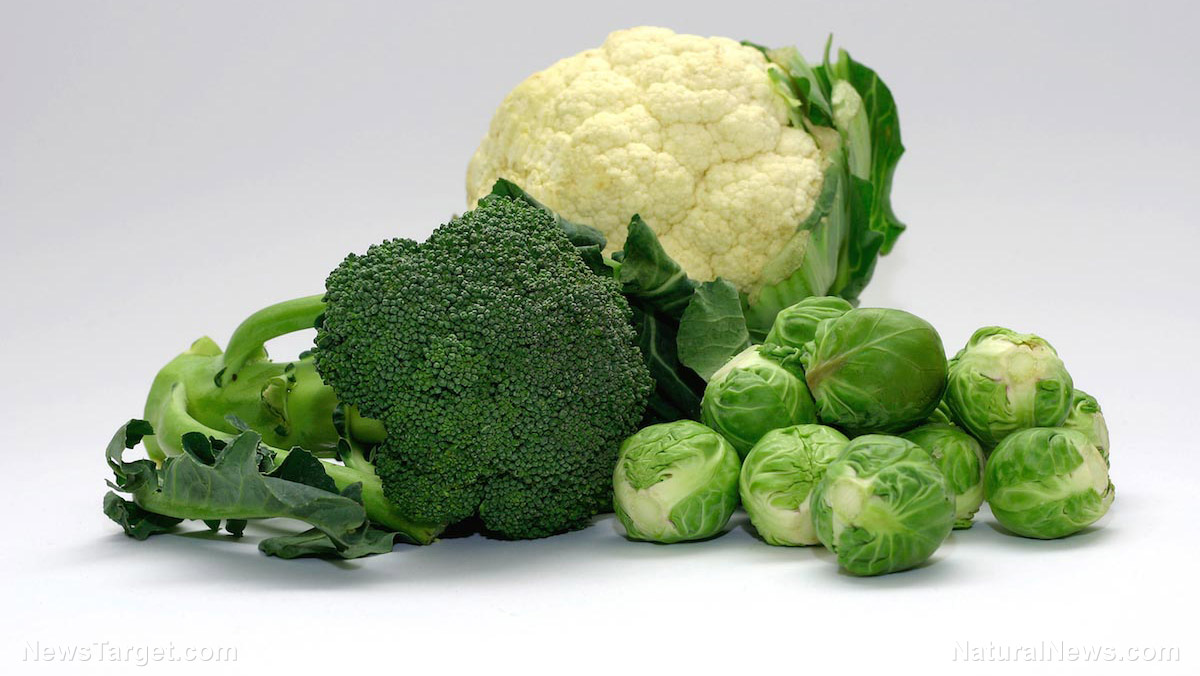
Advertisement
Cruciferous vegetables, such as broccoli, kale and Brussels sprouts, have secured a slot in virtually every type of diet around the globe, and for good reason. These vegetables have been linked to a reduced risk of heart disease and stroke and are being studied for their tremendous potential in cancer prevention.
Plus, cruciferous vegetables are versatile, easy to prepare and can liven any dish almost instantly.
Read on to learn about the many health benefits of cruciferous vegetables.
Cruciferous vegetables support heart health, slash cancer risk
Cruciferous vegetables refer to members of the Brassica genus of plants in the cabbage and mustard family. The family’s alternative name “Cruciferae” means “cross-bearing” in New Latin. It comes from the shape of their flowers, whose four petals resemble a cross.
Cruciferous vegetables include some well-known favorites like broccoli, cauliflower and kale. Other notable members are bok choy, mustard greens, horseradish, turnip, rutabaga, watercress, arugula and wasabi.
One thing that makes this group of vegetables special is the presence of sulfur-containing glucosinolates, which give cruciferous vegetables their distinctive odor and somewhat bitter flavor. In fact, cruciferous vegetables provide the richest sources of glucosinolates in the human diet.
Glucosinolates are responsible for most of the health benefits of these vegetables. When a cruciferous vegetable is cut, chopped or chewed, an enzyme called myrosinase is released. This enzyme transforms glucosinolates into other health-promoting compounds.
When you eat a cruciferous vegetable, your gut bacteria break down glucosinolates into isothiocyanates and indoles. These molecules have been shown to have antioxidant and anticancer properties. In fact, sulforaphane, an isothiocyanate, and indole-3-carbinol, an indole, have been widely studied for their role in cancer prevention.
In particular, sulforaphane and indole-3-carbinol are thought to reduce cancer risk by preventing the mutation of healthy cells into cancer cells and inhibiting the growth of cancer cells. Moreover, indole-3-carbinol may detoxify cancer-causing substances that enter your body.
Many cruciferous vegetables also contain carotenoids, such as lutein, zeaxanthin and beta-carotene. Recent studies indicate that carotenoids possess anticancer properties.
Additionally, cruciferous vegetables appear to have the right components to support healthy heart function. For instance, high levels of glucosinolate from cruciferous vegetables have been associated with lower levels of “bad” cholesterol, which can clog arteries and raise the risk of stroke.
Sulforaphane, on the other hand, helps protect cells from oxidative stress, which plays a role in the onset of many cardiac-related problems. In fact, sulforaphane has been linked to a lower risk of heart disease. If you want a heart-healthy meal that packs a cancer-fighting punch, add cruciferous vegetables to your plate.
Take note that more isn’t always better with cruciferous vegetables. Very high intake of these vegetables has led to hypothyroidism in animals. In hypothyroidism, the thyroid doesn’t create and release enough thyroid hormones into your bloodstream, resulting in fatigue, muscle cramps, weakness and irritability.
More studies are needed to determine whether high intake of cruciferous vegetables leads to hypothyroidism in humans. That said, it’s better to err on the side of caution and eat a modest amount of cruciferous vegetables as part of a balanced diet that includes other vegetables.
How to prepare cruciferous vegetables
If you’ve ever had overly bitter cruciferous vegetables, it’s likely that they were over-boiled or overcooked. They tend to taste more bitter when overcooked than if they were left raw. Thankfully, simple preparation techniques like sauteing or steaming can bring a natural sweetness to the forefront.
Here are some tips on how to prepare cruciferous vegetables:
- Eat them raw. Though a little tougher than other salad greens, kale and arugula still make healthy additions to a bowl of salad. They’re great if you want your salad to have crunch and texture.
- Saute them with olive oil. If you’d rather have softer kale, you can saute it with heart-healthy olive oil until it has softened slightly. You can cook bok choy, cauliflower and cabbage the same way.
- Make cauliflower rice. For gluten-free rice, grate cauliflower florets and saute them. The result is a bowl of rice that’s both lower in calories and higher in nutrients than plain white rice.
- Bake them. Brussels sprouts are one of the least popular cruciferous vegetables because of their slightly bitter flavor. One way to make them more appetizing is to drizzle them with olive oil and vinegar, then bake them until crispy.
- Mash them. Swap regular potatoes for rutabagas or turnips to create a healthier mash.
- Steam and shred them. Quickly steam cabbages and shred them to make toppings for your burrito bowls or tortilla wraps.
- Stir them into soups, stocks and braises. Never tried bok choy before? You can dice or chop it down to the stem and braise it in a low-sodium chicken broth. You can also add it to soups.
Cruciferous vegetables are rich in essential nutrients and potent compounds that have been linked to a number of health benefits, from a healthier heart to a lower risk of cancer. Follow the tips above to incorporate cruciferous vegetables into your daily routine.
Sources:
Advertisements







